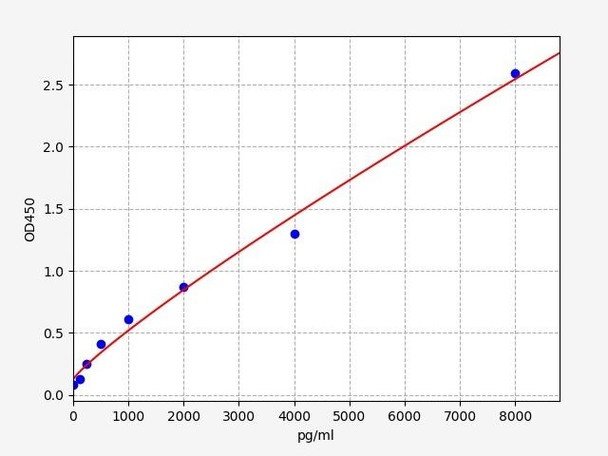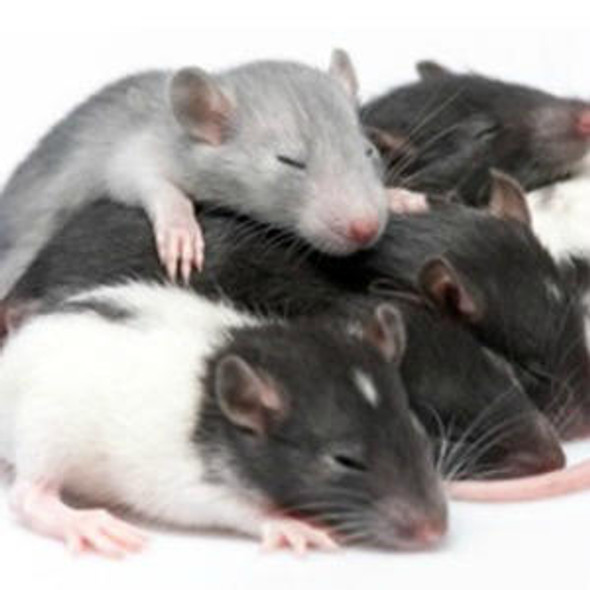Description
Human AQP1 / Aquaporin 1 ELISA
AQP1 (Aquaporin 1 (Colton Blood Group) Antigen) is a water channel protein found on the red blood cell membrane. It is mutated in the Colton blood group, which can cause hemolytic anemia. AQP1 helps regulate the passage of water molecules across the red blood cell membrane. In cases of hemolytic anemia, AQP1 is unable to function properly, leading to the increased loss of water from red blood cells. This causes the cells to become smaller and more fragile, leading to their destruction. Diseases associated with AQP1 include Blood Group, Colton System and Obstructive Hydrocephalus.
| Product Name: | Human AQP1 / Aquaporin 1 ELISA Kit |
| Product Code: | HUFI00731 |
| Size: | 96 Assays |
| Alias: | AQP-1, Aquaporin 1, AQP1, AQP-CHIP, CHIP28, CO, Aquaporin-CHIP |
| Detection method: | Sandwich ELISA, Double Antibody |
| Application: | This immunoassay kit allows for the in vitro quantitative determination of Human AQP1 concentrations in serum plasma and other biological fluids. |
| Sensitivity: | 75pg/ml |
| Range: | 125-8000pg/ml |
| Storage: | 4°C for 6 months |
| Note: | For Research Use Only |
| Recovery: | Matrices listed below were spiked with certain level of Human AQP1 and the recovery rates were calculated by comparing the measured value to the expected amount of Human AQP1 in samples. | ||||||||||||||||
| |||||||||||||||||
| Linearity: | The linearity of the kit was assayed by testing samples spiked with appropriate concentration of Human AQP1 and their serial dilutions. The results were demonstrated by the percentage of calculated concentration to the expected. | ||||||||||||||||
| |||||||||||||||||
| CV(%): | Intra-Assay: CV<8% Inter-Assay: CV<10% |
| Component | Quantity | Storage |
| ELISA Microplate (Dismountable) | 8×12 strips | 4°C for 6 months |
| Lyophilized Standard | 2 | 4°C/-20°C |
| Sample/Standard Dilution Buffer | 20ml | 4°C |
| Biotin-labeled Antibody(Concentrated) | 120ul | 4°C (Protect from light) |
| Antibody Dilution Buffer | 10ml | 4°C |
| HRP-Streptavidin Conjugate(SABC) | 120ul | 4°C (Protect from light) |
| SABC Dilution Buffer | 10ml | 4°C |
| TMB Substrate | 10ml | 4°C (Protect from light) |
| Stop Solution | 10ml | 4°C |
| Wash Buffer(25X) | 30ml | 4°C |
| Plate Sealer | 5 | - |
Other materials and equipment required:
- Microplate reader with 450 nm wavelength filter
- Multichannel Pipette, Pipette, microcentrifuge tubes and disposable pipette tips
- Incubator
- Deionized or distilled water
- Absorbent paper
- Buffer resevoir
| Uniprot | P29972 |
| UniProt Protein Function: | AQP1: Forms a water-specific channel that provides the plasma membranes of red cells and kidney proximal tubules with high permeability to water, thereby permitting water to move in the direction of an osmotic gradient. Belongs to the MIP/aquaporin (TC 1.A.8) family. |
| UniProt Protein Details: | Protein type:Membrane protein, multi-pass; Membrane protein, integral; Transporter; Transporter, aquaporin family Chromosomal Location of Human Ortholog: 7p14 Cellular Component: nuclear membrane; apical part of cell; integral to plasma membrane; brush border membrane; basolateral plasma membrane; apical plasma membrane; cytoplasm; basal plasma membrane; plasma membrane; nerve terminal; nucleus; sarcolemma; brush border Molecular Function:protein binding; ephrin receptor binding; potassium channel activity; water transporter activity; intracellular cGMP activated cation channel activity; ammonium transmembrane transporter activity; glycerol transmembrane transporter activity; potassium ion transmembrane transporter activity; nitric oxide transporter activity; water channel activity; transmembrane transporter activity; glycerol channel activity Biological Process: cGMP biosynthetic process; glycerol transport; cerebrospinal fluid secretion; wound healing; cellular response to stress; water transport; carbon dioxide transport; negative regulation of caspase activity; sensory perception of pain; pancreatic juice secretion; positive regulation of saliva secretion; odontogenesis; positive regulation of fibroblast proliferation; nitric oxide transport; hyperosmotic salinity response; bicarbonate transport; multicellular organismal water homeostasis; cellular homeostasis; transmembrane transport; lipid digestion; potassium ion transport; lateral ventricle development; response to drug; cellular water homeostasis; secretory granule organization and biogenesis; glomerular filtration; ammonium transport; positive regulation of angiogenesis; renal water transport; camera-type eye morphogenesis; response to estrogen stimulus; adrenocorticotropin hormone secretion; establishment and/or maintenance of actin cytoskeleton polarity; renal water homeostasis; cell volume homeostasis; negative regulation of apoptosis Disease: Blood Group--colton |
| NCBI Summary: | Aquaporins are a family of small integral membrane proteins related to the major intrinsic protein (MIP or AQP0). This gene encodes an aquaporin which functions as a molecular water channel protein. It is a homotetramer with 6 bilayer spanning domains and N-glycosylation sites. The protein physically resembles channel proteins and is abundant in erythrocytes and renal tubes. The gene encoding this aquaporin is a possible candidate for disorders involving imbalance in ocular fluid movement. Several transcript variants encoding different isoforms have been found for this gene. [provided by RefSeq, Jun 2010] |
| UniProt Code: | P29972 |
| NCBI GenInfo Identifier: | 267412 |
| NCBI Gene ID: | 358 |
| NCBI Accession: | P29972.3 |
| UniProt Secondary Accession: | P29972,Q8TBI5, Q8TDC1, B5BU39, E7EM69, E9PC21, F5GY19 |
| UniProt Related Accession: | P29972 |
| Molecular Weight: | 16,677 Da |
| NCBI Full Name: | Aquaporin-1 |
| NCBI Synonym Full Names: | aquaporin 1 (Colton blood group) |
| NCBI Official Symbol: | AQP1 |
| NCBI Official Synonym Symbols: | CO; CHIP28; AQP-CHIP |
| NCBI Protein Information: | aquaporin-1; aquaporin-CHIP; urine water channel; channel-like integral membrane protein, 28-kDa; water channel protein for red blood cells and kidney proximal tubule; aquaporin 1 (channel-forming integral protein, 28kDa, CO blood group) |
| UniProt Protein Name: | Aquaporin-1 |
| UniProt Synonym Protein Names: | Aquaporin-CHIP; Urine water channel; Water channel protein for red blood cells and kidney proximal tubule |
| UniProt Gene Name: | AQP1 |
| UniProt Entry Name: | AQP1_HUMAN |
*Note: Protocols are specific to each batch/lot. For the correct instructions please follow the protocol included in your kit.
Before adding to wells, equilibrate the SABC working solution and TMB substrate for at least 30 min at 37°C. When diluting samples and reagents, they must be mixed completely and evenly. It is recommended to plot a standard curve for each test.
| Step | Protocol |
| 1. | Set standard, test sample and control (zero) wells on the pre-coated plate respectively, and then, record their positions. It is recommended to measure each standard and sample in duplicate. Wash plate 2 times before adding standard, sample and control (zero) wells! |
| 2. | Aliquot 0.1ml standard solutions into the standard wells. |
| 3. | Add 0.1 ml of Sample / Standard dilution buffer into the control (zero) well. |
| 4. | Add 0.1 ml of properly diluted sample ( Human serum, plasma, tissue homogenates and other biological fluids.) into test sample wells. |
| 5. | Seal the plate with a cover and incubate at 37 °C for 90 min. |
| 6. | Remove the cover and discard the plate content, clap the plate on the absorbent filter papers or other absorbent material. Do NOT let the wells completely dry at any time. Wash plate X2. |
| 7. | Add 0.1 ml of Biotin- detection antibody working solution into the above wells (standard, test sample & zero wells). Add the solution at the bottom of each well without touching the side wall. |
| 8. | Seal the plate with a cover and incubate at 37°C for 60 min. |
| 9. | Remove the cover, and wash plate 3 times with Wash buffer. Let wash buffer rest in wells for 1 min between each wash. |
| 10. | Add 0.1 ml of SABC working solution into each well, cover the plate and incubate at 37°C for 30 min. |
| 11. | Remove the cover and wash plate 5 times with Wash buffer, and each time let the wash buffer stay in the wells for 1-2 min. |
| 12. | Add 90 µl of TMB substrate into each well, cover the plate and incubate at 37°C in dark within 10-20 min. (Note: This incubation time is for reference use only, the optimal time should be determined by end user.) And the shades of blue can be seen in the first 3-4 wells (with most concentrated standard solutions), the other wells show no obvious color. |
| 13. | Add 50 µl of Stop solution into each well and mix thoroughly. The color changes into yellow immediately. |
| 14. | Read the O.D. absorbance at 450 nm in a microplate reader immediately after adding the stop solution. |
When carrying out an ELISA assay it is important to prepare your samples in order to achieve the best possible results. Below we have a list of procedures for the preparation of samples for different sample types.
| Sample Type | Protocol |
| Serum | If using serum separator tubes, allow samples to clot for 30 minutes at room temperature. Centrifuge for 10 minutes at 1,000x g. Collect the serum fraction and assay promptly or aliquot and store the samples at -80°C. Avoid multiple freeze-thaw cycles. If serum separator tubes are not being used, allow samples to clot overnight at 2-8°C. Centrifuge for 10 minutes at 1,000x g. Remove serum and assay promptly or aliquot and store the samples at -80°C. Avoid multiple freeze-thaw cycles. |
| Plasma | Collect plasma using EDTA or heparin as an anticoagulant. Centrifuge samples at 4°C for 15 mins at 1000 × g within 30 mins of collection. Collect the plasma fraction and assay promptly or aliquot and store the samples at -80°C. Avoid multiple freeze-thaw cycles. Note: Over haemolysed samples are not suitable for use with this kit. |
| Urine & Cerebrospinal Fluid | Collect the urine (mid-stream) in a sterile container, centrifuge for 20 mins at 2000-3000 rpm. Remove supernatant and assay immediately. If any precipitation is detected, repeat the centrifugation step. A similar protocol can be used for cerebrospinal fluid. |
| Cell culture supernatant | Collect the cell culture media by pipette, followed by centrifugation at 4°C for 20 mins at 1500 rpm. Collect the clear supernatant and assay immediately. |
| Cell lysates | Solubilize cells in lysis buffer and allow to sit on ice for 30 minutes. Centrifuge tubes at 14,000 x g for 5 minutes to remove insoluble material. Aliquot the supernatant into a new tube and discard the remaining whole cell extract. Quantify total protein concentration using a total protein assay. Assay immediately or aliquot and store at ≤ -20 °C. |
| Tissue homogenates | The preparation of tissue homogenates will vary depending upon tissue type. Rinse tissue with 1X PBS to remove excess blood & homogenize in 20ml of 1X PBS (including protease inhibitors) and store overnight at ≤ -20°C. Two freeze-thaw cycles are required to break the cell membranes. To further disrupt the cell membranes you can sonicate the samples. Centrifuge homogenates for 5 mins at 5000xg. Remove the supernatant and assay immediately or aliquot and store at -20°C or -80°C. |
| Tissue lysates | Rinse tissue with PBS, cut into 1-2 mm pieces, and homogenize with a tissue homogenizer in PBS. Add an equal volume of RIPA buffer containing protease inhibitors and lyse tissues at room temperature for 30 minutes with gentle agitation. Centrifuge to remove debris. Quantify total protein concentration using a total protein assay. Assay immediately or aliquot and store at ≤ -20 °C. |
| Breast Milk | Collect milk samples and centrifuge at 10,000 x g for 60 min at 4°C. Aliquot the supernatant and assay. For long term use, store samples at -80°C. Minimize freeze/thaw cycles. |
Fill out our quote form below and a dedicated member of staff will get back to you within one working day!






